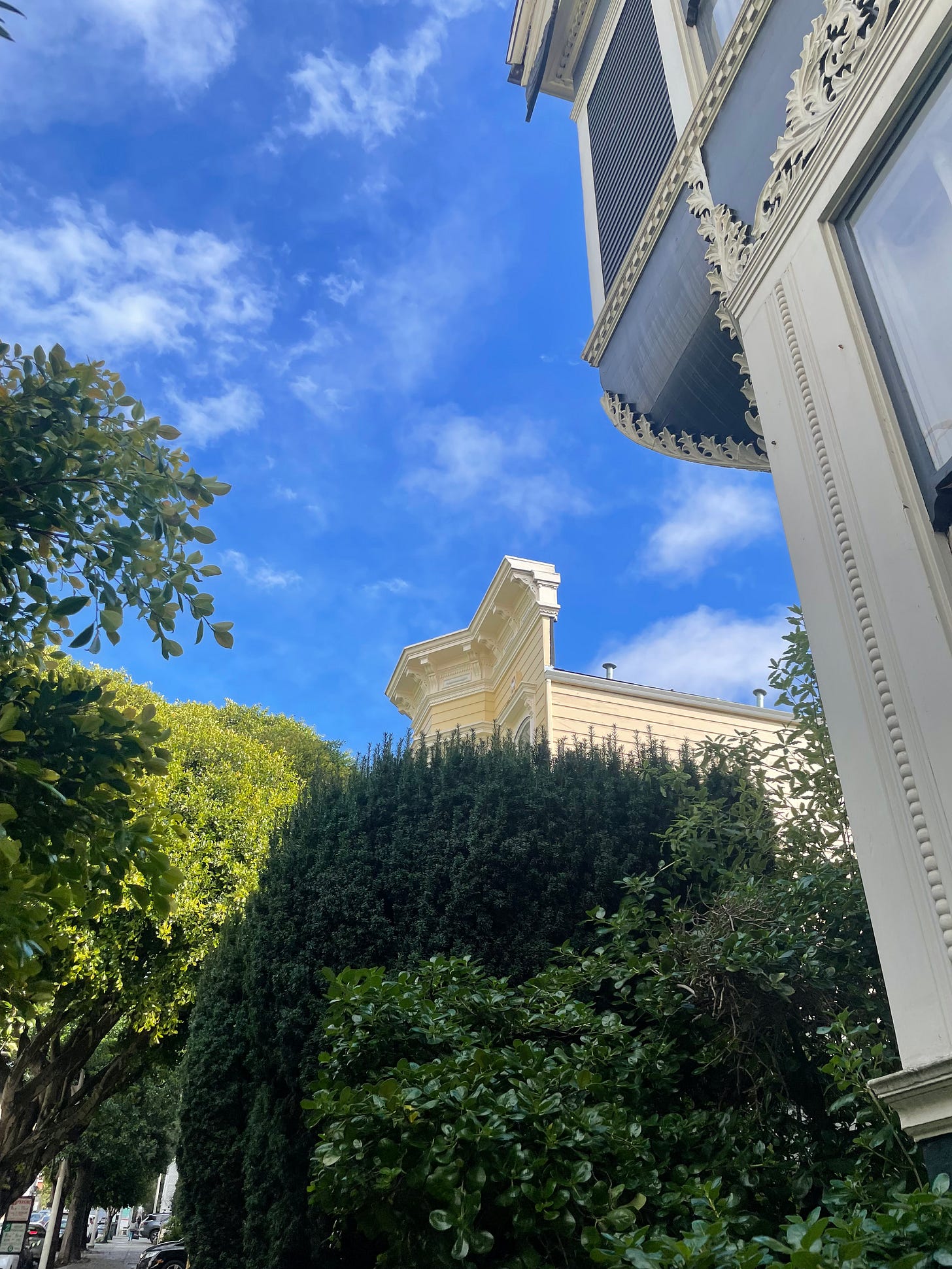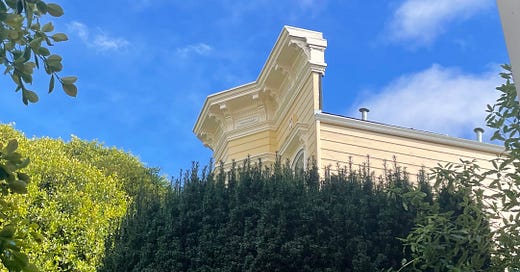SAN FRANCISCO – EARLY JANUARY
The question of where Northern California begins is a famously contentious question among Californians. Here there is a dispute between the Bay Area people and my people, the Southern Californians. Southern Californians believe that the Bay Area is Northern California, but people from the Bay will sometimes tell you that the Bay is just the Bay and that Northern California is the term for what lies northward, that whole lonely stretch from Marin or really from Mendocino up to Crescent City and the Oregon border. No one knows what to do with the Central Coast, or the Central Valley. Various classifications are hazarded, none quite convincing.
What is clear, however, is that somewhere around Prunedale, or Hollister, right around where the counties of Monterey and San Benito meet those of Santa Cruz and Santa Clara, the country starts to change. Up to that point, the central coast is one single thing, Steinbeck country, also my country—unfortunate, but fitting, to have to share it with Steinbeck—that great tan mantle of California, large parts of which, despite the intrusion of fancy vineyards and the general transformation of much of the rural West into a retreat for rich people, are still more or less untouched and agri-pastoral and achingly beautiful and ancient and serene. From Ojai up to Monterey is an empire of jagged coastline, mostly narrow coastal apron; in the first valley over the coast ranges, rolling hills and oak trees; in the second, scrub and bare tan hillsides.
Around Prunedale the redwoods come onto the scene and change things. Those tall evergreens give the valleys a different character. And here also is where the Spanish influence attenuates. California is like New York in possessing a rare thing in America: a quasi-mythological, non-indigenous prehistory, in the form of the physical and cultural legacy of another band of Europeans who dominated the scene for some time before the Anglos showed up, but who have since disappeared. In New York the Dutch aristocracy blended into English society more easily, in part because of shared Protestantism, and of course even today there are Dutch old money families in New York. This did not happen with the Californios, who were more effectively dispossessed by the incoming Anglos (unlike in New Mexico, where the equivalent class of originally Spanish, later Mexican landowners still holds great sway in state politics). The South has its own mythic non-indigenous past, of course, bestowed by a different kind of Anglo … In all cases this prehistory offers a kind of foothold for literature—e.g. Ramona, Washington Irving and Southern Gothic, respectively. And it offers a certain sense of cultural solidity.
The Spanish influence technically goes as far north as Sonoma, but it is significantly attenuated once you get to the Bay Area because the Gold Rush brought more Anglos in greater numbers more quickly and in a bigger single wave than the rest of the state. And north of the Bay, the towns start to feel more like the Pacific Northwest or the non-Spanish interior West: Anglo settler towns. Shallower somehow. Call it my southern Californian prejudice, if you like … the Mexican food also worsens precipitously … and Mexican culture begins to be seen (by the white majority) more as an immigrant culture, if a generally welcome, widespread and long-attested one, rather than in some sense a substratum, as it is further south.
San Francisco is the hinge point in this picture of the state. It is obviously much more a Victorian Anglo town than a mission town, but it has to be the exception that proves the rule in terms of shallowness. Walking around North Beach, the city seems like what it once was: the sole West Coast city on the Eastern model (LA is a carpet and Seattle a garrison), with real density, street life, attached apartment-houses, large long-established immigrant neighborhoods. It was always a quainter version—less heavy industry than in the cities of the Eastern seaboard adds to the Victorian charm, the quietness, the relative lack of alienation and cacophony (the Tenderloin representing a different kind of alienation from, say, Times Square). No clattering elevateds or vast railyards or belching smokestacks here.
San Francisco is today something rather less than this. The city’s fateful decision not to absorb the surrounding suburbs, as did San José, Seattle, Los Angeles and for that matter New York City, coupled with the relocation (with containerization) of the port across the Bay to Oakland, urban renewal—namely, the destruction of the black Fillmore District—and the more recent transformation of the city into a playground for tech workers, have conspired to make it into a city composed, as almost the entire California coast now nearly is, almost entirely of bourgeoisie and lumpenproletariat, with the working class banished to far exurbs or the Central Valley and otherwise kept out of sight. It is one of the most beautiful cities on earth and one of the most pleasant, and it is in an important sense a lie.
There’s a neighborhood feeling, it’s peaceful here in North Beach, where the old Italian cafes are full of the usual suspects. Retirees sit over coffee and leisurely drag crayons over butcher paper spread over the tables or read the San Francisco Chronicle in print or talk with a whitehaired friend. Two Californian grandes dames with raccoon eyeliner exchange barbed familiar pleasantries from adjacent tables. In the park the woman walking her dog says hello to the friendlier bums and they say hello back. Minus the elderly Chinese women moving stiffly in rhythm to traditional music in an exercise group near the old Italian church, something very much like this scene could play out in any strip mall across the vast middle-class expanse of California. This was Éric Rohmer-style city life, urban living without urbanity, pleasant and banal and bourgeois, all with a California suburban twist. It’s easy to see why the Beats liked it here, it was like being in Europe while being in America, or you could imagine it was that way.
And, as a friend here mentioned to me, North Beach is maybe the last neighborhood in San Francisco that has anything resembling a street scene. Your average sidewalk here is deserted at all hours of the day. An eternal calm more eerie than the suburbs.

San Francisco used to have masses. Reading about the Sixties for an essay project it seems that between the Be-Ins and the Trips Festival and the protests and the concerts and everything else there were mass events with tens of thousands of attendees all the time in this city in the Sixties. The streets were full into the late Seventies. And now there’s what—Bay to Breakers? For all its cultural significance, for all its recent contributions, however insalubrious, to the new cultural and political vanguard in America, to the tech wing of the new official coalition, San Francisco is so obviously so much less of a city now than it was then, not so much because of the addition of the nouveau riche tech people as because of the subtraction from the city of so much of its working class, a fate that New York City, even in its new, shiny, post-Giuliani, post-Bloomberg guise, has escaped.
I’m told that the social and cultural scene in San Francisco takes place these days mostly through house parties known to a certain set. And of course back in the Sixties there were a lot of those, too—underground house parties. That’s how the Trips Festival took shape, from the Merry Pranksters’ word-of-mouth Acid Tests. But I don’t see something like that happening again, the spillover into mass gatherings. I asked the clerk at the Beat Museum bookstore about the lack of big events, who speculated that increasing costs and government red tape were to blame for fewer mass events. A typical Californian answer … certainly there is some truth to that, but the real answer is that there are no masses in San Francisco anymore. There is, so to speak, no people, no demos. It is a superstructural city, a city populated by superstructuralists and of casualties of the superstructure … like something out of Calvino’s Invisible Cities.
I remember going to Oakland for a concert in 2018 and finding myself discharged, after the concert, into the beating heart of what I later learned was one of the city’s famous First Fridays. The festival atmosphere and varied class and racial composition of the crowd packing the sidewalks—it took fifteen minutes to elbow your way down a block—was something I had never seen, and to this day have never seen, in San Francisco. The city doesn’t seem capable of that, and that’s a shame. Oakland is probably one of the few places in the Bay capable of it. San José is a suburb, the suburbs are suburbs, and San Francisco has its sights set on becoming three suburbs standing on top of each other in a Victorian trenchcoat.



There's plenty of people out and about here in Bernal and the Mission.
Good stuff. I live in North Beach and am a frequent visitor at that park you mention in front of the old church. You are certainly correct about the enormous gap between estates here, and everyone can see it.
On another note about San Francisco, it seems to be on the cusp of a massive recovery from its debilitating Covid malaise. I have a few friends moving here or saying they want badly to move here soon. And yet, all of these friends are bourgeois corporate types. The gap will widen.